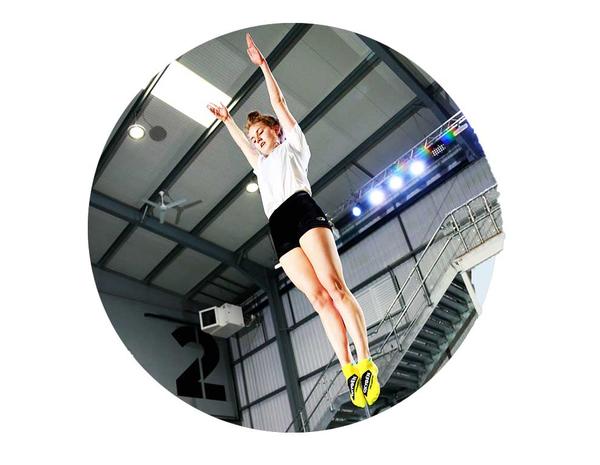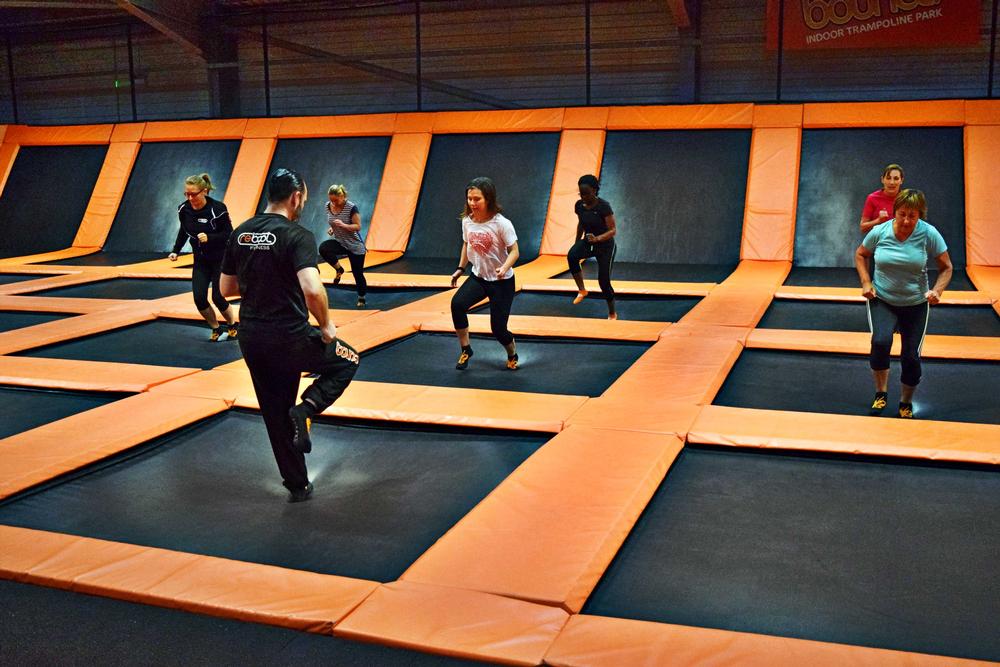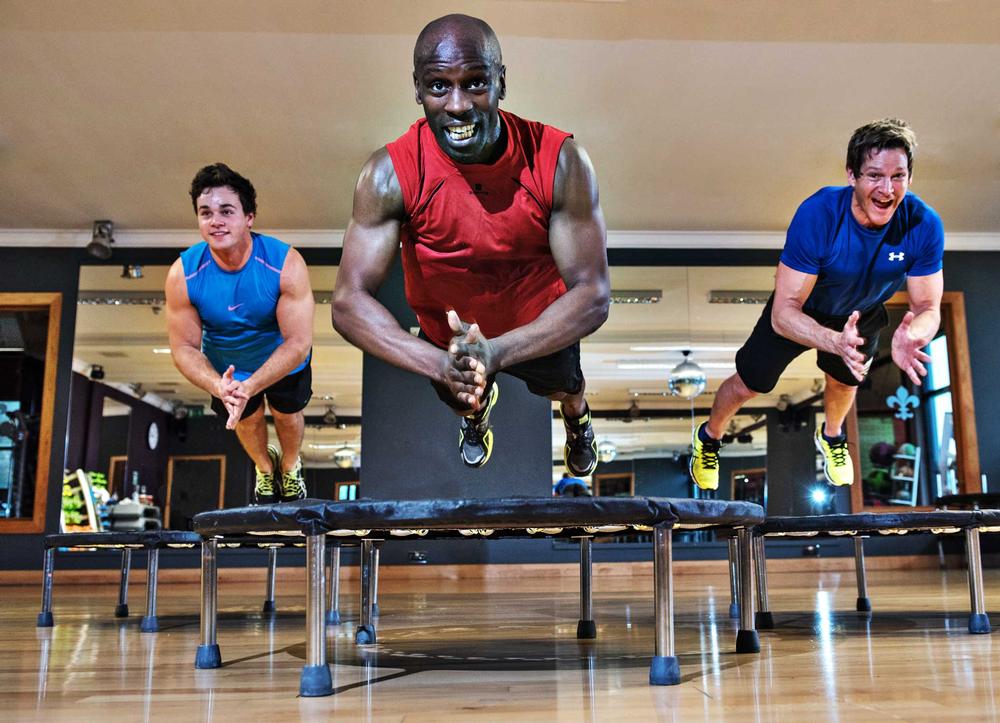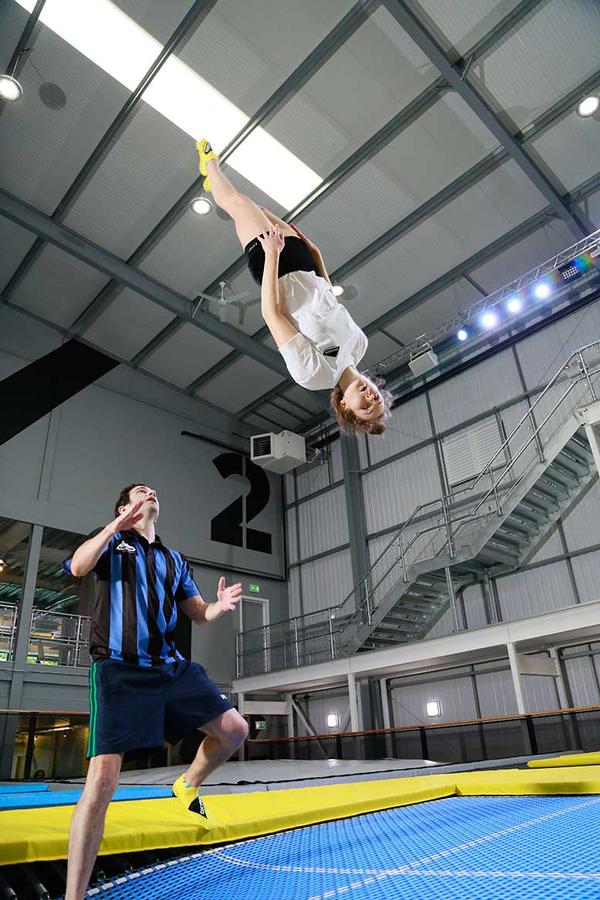I’m sure there’s a physiological link between bouncing and smiling,” says Dave Stalker, former CEO of ukactive and now founder of Oxygen Freejumping, London’s first trampolining park, which opened in July 2015.
He’s not the only one to cross over from health and fitness to trampolining. Gary Knill, director of Bounce – the UK’s first trampolining park, which opened in Milton Keynes in May 2014 – previously had a Fitness First franchise in the Middle East. “I’ve gone from selling long-term memberships in the fitness industry to one-hour slots where there’s no sense of selling,” he says. “Even I have been shocked by the popularity.”
Both Knill and Stalker agree that, after spending lengthy careers trying to motivate people to get active and change their lives, suddenly – by switching to selling fun rather than fitness – they can see it happening.
“I’ve never seen anything like it in my 26 years in the fitness industry,” adds Stalker. “People are doing fitness and loving it. We’re not pushing the exercise angle – we’re just selling it as fun.”
All the bouncing around is a good workout: an hour of energetic jumping is said to burn a whopping 1,000 calories.
“Rebound exercise is the best form of exercise known to man – and that’s according to NASA, which uses it as a rehab tool for astronauts, helping them improve bone density after being weightless in space,” says Lisa Evans, marketing director of Go Air, which launched in Cardiff in November 2015. She continues: “It has an amazing array of health benefits including stress relief, muscle toning, draining the lymphatic system and improved co-ordination – but most of all, it’s great fun!”
New fitness concepts
Alongside the wide range of facilities already offered at the new trampolining mega-parks (see ‘More than just bouncing’, below), a number of operators have also launched their own in-house fitness concepts to broaden their appeal.
Bounce, for example, has created Reboot. A combination of rebounder-style exercise (which uses one-person mini-trampolines) and bootcamp, these classes are aimed at kids aged eight upwards, as well as adults of all abilities. They have been very popular, with 223 people signing up for the latest 10-week course at a cost of £79–129 per course.
There’s also a Reboot Rippa class, which is run just occasionally for people who want to push themselves harder.
“The park was designed with an area for functional fitness at the core,” explains Knill. “It was always my intention to introduce fitness, creating a club within a club. Going forward our sites will include soft play areas for infants as well, so we’ll be able to cater for ages zero to 80.”
Meanwhile, Go Air is running its own aerobics classes on the trampolines, with the sessions designed by its staff who have a background in sport and personal training. “They’re high energy, but low impact on the joints,” says Evans.
And Oxgyen Freejumping has taken on two master trainers to run HIIT classes in the floor space alongside the trampolines – thereby maximising the available space in the centre. Even without advertising, these classes are booming.
Oxygen is also offering Rebound classes on individual trampolines. While the main trampoline hall appeals mainly to kids through to young adults, not to mention the occasional corporate event, Stalker says the Rebound classes – held in a separate studio next to the café – are typically attended by women aged 23 to 45 who are looking for a fun alternative to the group exercise classes being offered by gyms.
Rebound director James Winfield says the company is already in talks with other operators too. The classes are a great option for people who want to lose weight, he explains: “People are weightless at the top of the bounce, but three times heavier at the bottom, which leads to high calorie burn.”
Knill adds: “It would be great to have health clubs next door to trampoline parks. I really believe this could help in the fight against obesity.”
Trampolining has also proven to be popular for people with disabilities, particularly those with mental health issues such as autism. “Trampolining builds social skills and better engagement with peers, families and teachers,” says Stalker. “It also improves motor skills and confidence, muscle growth, sensory skills and allows for a release of energy in a positive way.”
Many of the parks are now reaching out to groups that work with autistic children. For example, Go Air has hired staff who are experienced in working with disabled people and those who are on the autism spectrum. “Go Air has always been far more than just a place to play. We genuinely feel that we have a role to play in encouraging the nation to be active,” says Evans.
Where next?
At the time of writing, there were 65 trampolining mega-sites in operation in the UK, with many more in the pipeline. Bounce also has plans to franchise its model in Europe and the Middle East.
“In the UK, operators are initially looking at primary towns such as Manchester, Birmingham and Leeds, then expanding out to secondary and tertiary towns,” says Nick Booth, MD of Continental Sports, which includes trampolines among its product portfolio. “Our orders are coming in thick and fast. The only thing slowing down growth is finding suitable properties, negotiating rents with landlords and getting planning permission for a change of use.”
He adds that a number of local authority leisure operators are looking at turning sports halls, or parts of them, into trampolining parks. “Ideally we need about 15,000sq ft, but they do range from 10,000 to 40,000sq ft,” he says.
The novelty factor
The general consensus is that the UK can safely accommodate 300–350 centres, so there’s a long way to go before saturation – but will the novelty start to wear off?
The operators, confident they have struck gold, think not. With 308,000 visitors in the first 19 months, Knill points to an upward momentum: he says there’s now a trend towards booking two-hour, rather than one-hour, sessions. He also believes it’s a recession-proof business, as mums will always find the money for a kids’ party or to give them a treat – and at £9.99 per person per visit, it’s affordable as treats go.
Nevertheless, as time goes on and more sites open within a closer proximity, operators will have to work harder to differentiate their offering. Dave Booth, director of Luna Trampolines, says there are some exciting new developments in the pipeline to help keep things fresh: “We’ve allocated significant resource into the R&D of new trampoline activities, and in the past six months alone we’ve developed a plethora of new features including slack lines, cardio walls, balance beams and hanging walls. The next period of R&D will be very exciting.”
The market may also segment – with some sites specialising in particular types of activity or user group – and ancillary activities are likely to be added. Bounce has already added an arcade with air hockey, table tennis and two Star Wars machines.
Competition for clubs?
It’s clear that trampoline parks are effectively creating a new leisure category, providing competition for traditional family activities like cinemas and bowling, and also crossing over into sport and health and fitness territory.
So what does this mean for traditional health clubs and leisure centres, which are unlikely to have 25,000sq ft of unused space to transform into a trampoline park? Are trampoline parks a threat to traditional gyms, or can the fitness industry take valuable lessons from them?
Perhaps the biggest lesson to learn is the importance of making workouts fun. Ask yourself this: whether it’s introducing Rebound classes with great soundtracks, or coming up with new exercise concepts where fun comes first and fitness is a by-product, how can you get members smiling while they work out?



























































